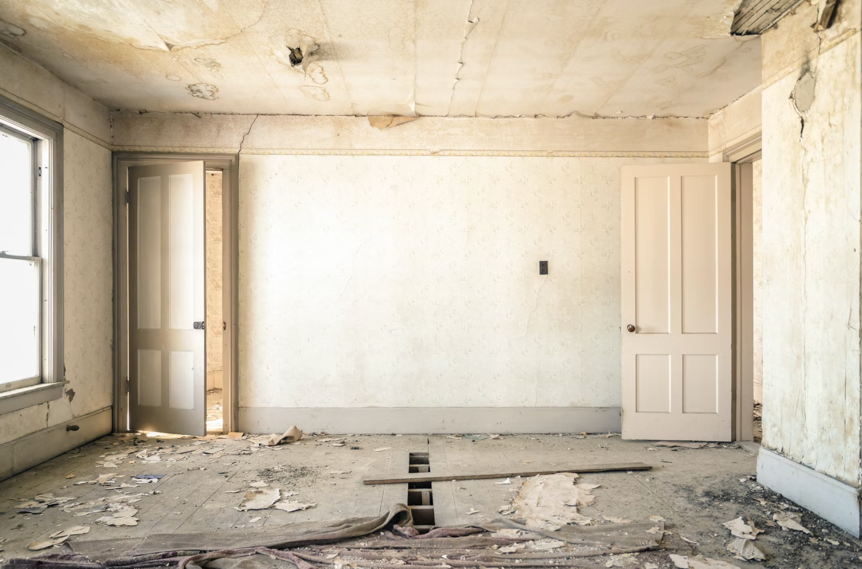First home buyers certainly have their challenges and it’s a well-worn path of any property journalist’s when it comes to documenting the tough plight of the firstie.
Beyond the task of saving an adequate deposit, or that of managing a fun lifestyle on a tight savings regime, the less spoken-of challenge relates to their broad inability to financially cover a renovation.
While upgraders and most investors have the benefit of equity to bolster a fix-up, most first home buyers don’t.
This is an often-overlooked challenge, but it’s a critical one to understand before signing a contract of sale. The ability (or inability) to tackle an immediate renovation boils down to LVR, (loan to value ratio), and cash on hand.

And most first home buyers who are shouldering the purchase without the assistance from parents or other family members, (whether it be gifted funds or a third-party security guarantor arrangement, ie. family pledge loan) are restricted by their savings, not only in determining their borrowing capacity, but they maintain an enormous reliance on every dollar saved in order to meet the obligations of the purchase that cannot be financed by the bank.
To illustrate this, let’s consider a case study of a first home buyer couple are keen to purchase a home.
They will require a minimum of 5% in savings for a bank deposit, although this is considered a high-risk purchase, and a 95% loan to value ratio is generally the highest that a lender will tolerate and as such, the borrowers will be subject to paying Lender’s Mortgage Insurance, (LMI). The LMI is calculated based on the insurer’s premium-calculation matrix. It is a percentage of the total purchase price, varying on sliding scale according to LVR. The higher the LVR, the higher the percentage. It is not uncommon for LMI to equate to tens of thousands of dollars. It’s important to note that LMI is not for the consumer’s protection, but for the banks’. In the unfortunate event that the borrower defaults, (stops paying their mortgage repayments), the bank will ultimately sell the property, and if there is a deficit between the debt balance and the resale price, the insurer will come to the rescue on the bank’s behalf.
The ideal deposit size is 20%, because lenders view a 20% deposit as a lower risk for a residential property purchase and hence don’t enforce LMI, but most first home buyers don’t reach this savings balance and opt to rely on LMI.
LMI can be capitalised, (ie. ‘added’ to the loan balance) in most cases. Over a thirty year loan term, this absorbed cost is less of a critical blow to a first home buyer’s savings balance and allows them to enter the market with less than a 20% deposit without eroding their savings balance.
Stamp duty however, is not a cost that can be capitalised. Many of our states and territories have stamp duty concessions on offer for eligible first homeowners though, and pending the price tag, some buyers won’t be hit with stamp duty at all. For those who are not eligible, (ie. Purchasers who are buying a property above the price-threshold, those who have lived with a partner who received the benefit of the concession, or non-permanent residents), the stamp duty is a genuine up-front cost that must be factored into the required savings balance.
The same goes for the fees to pay service providers such as solicitors, conveyancers, building inspectors, buyer’s agents and any other paid professionals.
The most critical consideration for first home buyers relates to borrowing capacity.
Borrowing capacity is based on two critical elements:
- The size of the deposit, and
- The borrower’s ability to service the loan
Servicing is a common challenge for investors, and particularly for multi-property investors, because every lender’s servicing buffer is greater than the actual interest rate. A borrower may run their own calculations and reconcile that they are financially positioned to shoulder a future purchase based on 3.5%pa interest rate repayments, however the lender’s buffer rate will be circa 6%pa in this current climate. Despite the fact that the investor’s actual repayments won’t be at this magnitude, the lender requires them to demonstrate that they could sustain repayments of this magnitude as a requirement for obtaining the loan.
Servicing is calculated by taking the applicant’s income and subtracting all of their expenses, (from food to clothing to credit cards, vehicle costs, education expenses and so on). The remaining ‘surplus’ amount is expected to cover the repayments of the proposed loan at the lender’s buffer rate.
Investors who have multiple debt obligations eventually spread their surplus income thin enough for the bank to say no to further loans.
First home buyers don’t always face this hurdle, in fact many could service a loan amount that is greater than their borrowing capacity limit. This ‘other’ limit relates to their savings, or lack thereof.
For example, Joey and Lana are hoping to buy a family home. They have saved $80,000 and are hoping to buy a $1,000,000 property.
Their incomes are strong, roles are permanent, and the lender is satisfied with their employment status, savings history and credit conduct. Their incomes are strong enough to support loan repayments for a $1,100,000 purchase; a price point even higher than they feel they need.
Joey and Lana don’t qualify for any stamp duty concessions, however.
They are restricted by their savings, and even at the maximum loan to value ratio with LMI payable, after they have paid their stamp duty and legal fees, Joey and Lara’s maximum purchase price is closer to $800,000.
In this scenario, every dollar they save from here on allows them to borrow another $18, (factoring in increasing stamp duty as their purchase price increases).
Unlike upgraders and investors, first home buyers are completely reliant on their own savings. Upgraders and investors may have the luxury of being able to access accumulated equity, and also those who have made additional repayments into their redraw or offset accounts. They can generally buy a property and fund the renovation from equity or additional savings.

First home buyers are often skint by the time the property settles.
For a first home buyer to contemplate a renovation or tidy-up, they need to have additional funds on hand earmarked for the project, and unless they have the support of a family member or an unsecured loan, they won’t be able to finance the work required.

The best option in these circumstances is for them to carefully consider how rugged the property condition could be to suit their tolerance level, and how long they could live in a rugged property.
Importantly, the bank’s valuer has the power to decide if the property is too rugged to qualify as comfortably habitable. If they determine that it isn’t, they may risk rate it into a different category that eliminates the option for LMI. In layman’s terms, they may insist on an 80% LVR maximum, forcing a buyer to have 20% deposit in savings plus the stamp duty and other purchase costs.
Too many first home buyers make the mistake of sourcing a fixer-upper without giving this thought.
The repercussions of a mistaken purchase range from stressful domesticity to liquidating the asset. And unlike an upgrader or investor who had sufficient equity to avoid LMI, the reluctant first homebuyer’s sale will also cost them their LMI premium.
Food for thought.
First home buyers who are contemplating a renovation should always ask themselves;
“How and when can I finance the changes”?,
“Can I live with it for that period of time?, and
“Will the bank valuer determine that an 80%+ LVR is not an option?”
REGISTER TO OUR NEWSLETTER
INFORMATION
CONTACT US
1A/58 ANDERSON STREET,
YARRAVILLE VIC 3013
0422 638 362
03 7000 6026
CATE@CATEBAKOS.COM.AU
